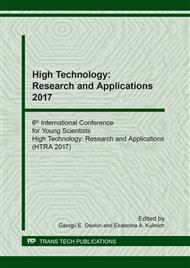p.336
p.346
p.352
p.358
p.364
p.371
p.377
p.383
p.388
Development of an Equipment Model in Chlorine Liquefaction Process
Abstract:
The article describes the development of a mathematical model for a condenser-evaporator, which occupies a central position in chlorine liquefaction process. The model describes the key processes in the equipment unit: freon evaporation, chlorine condensation, change in freon level and in equipment pressure. The model is based on the equations characterizing the processes mentioned above, which makes it possible to use the model for design and calculations of non-contact heat transfer equipment with phase transitions of heat carriers of various characteristics. The simulation was carried out with the aim of further development of a condenser-evaporator control system.
Info:
Periodical:
Pages:
371-376
Citation:
Online since:
April 2018
Price:
Сopyright:
© 2018 Trans Tech Publications Ltd. All Rights Reserved
Share:
Citation:


